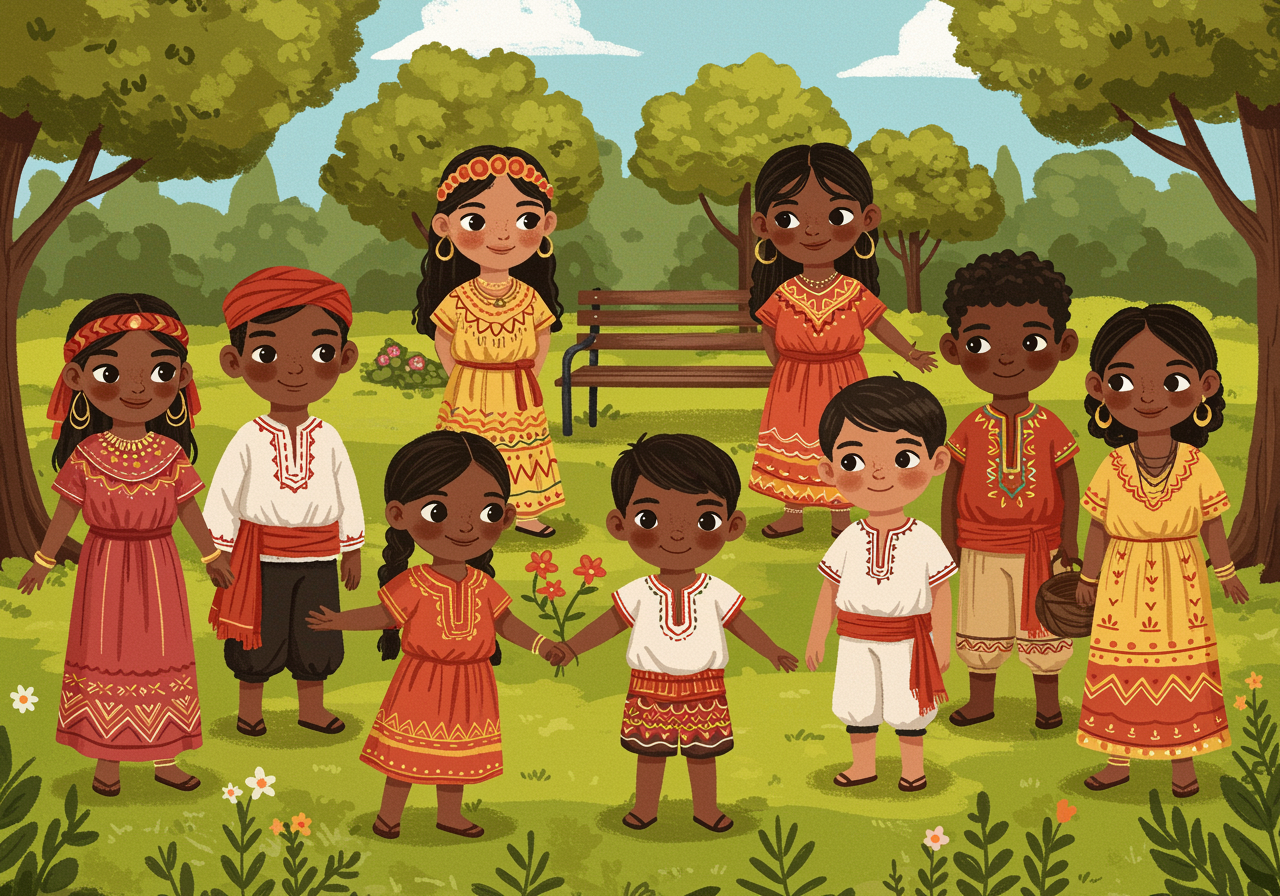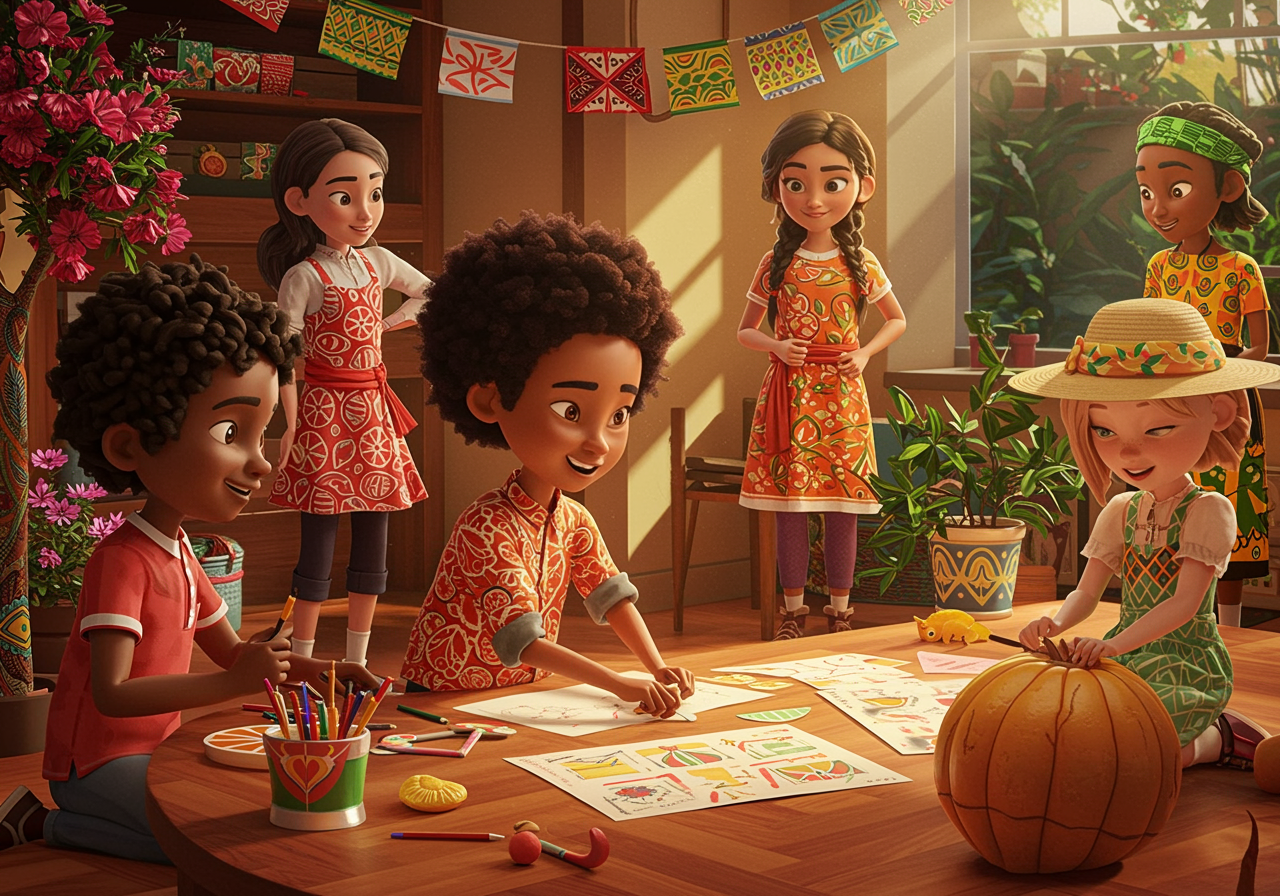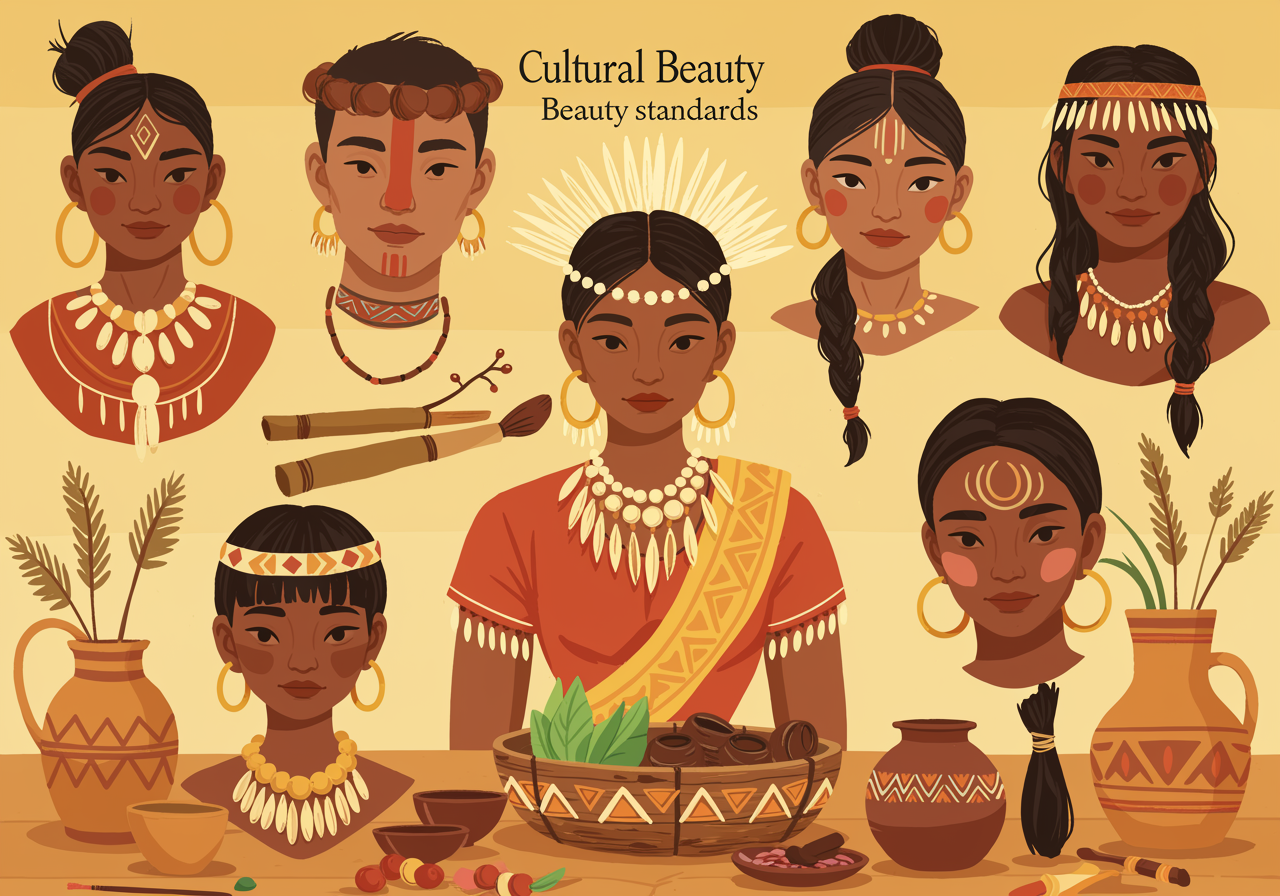Beauty Around the World: Why Every Culture Has Its Own Style Magic
Discover how geography, history, and traditions create amazing beauty standards across the globe
Explore why a nose piercing might be beautiful in one culture while long necks are prized in another – and why this diversity makes our world more interesting!
Overview
Ever wonder why your friend's family thinks henna tattoos are gorgeous while your neighbor loves bright purple hair? Different cultures around the world have developed their own unique ideas about what looks beautiful and stylish. These differences aren't random – they're shaped by history, climate, available materials, and deep cultural meanings. Understanding why beauty looks different everywhere helps us appreciate diversity and question our own assumptions about what's 'normal' or 'pretty.'

Understand in 30 Seconds
Get up to speed quickly
- Climate Shapes Style: Hot, sunny places often value darker skin that protects from UV rays, while colder climates might prize lighter skin that absorbs more sunlight for vitamin D.
- Resources Matter: Cultures use what's available – Pacific Islanders make jewelry from shells and flowers, while mountain cultures might use metals and stones.
- History Creates Meaning: Certain styles become symbols of status, age, or belonging – like how wedding rings show marriage or how graduation caps show achievement.
- Traditions Tell Stories: Many beauty practices carry deep cultural stories – face paint might represent spiritual protection, while specific hairstyles could show family heritage.
Real Life Scenario
Situations you can relate to
Imagine you're planning the ultimate school dance, but students from five different countries are helping design it. The Japanese student suggests elegant, simple decorations with natural elements. The Nigerian student wants bold, colorful patterns and flowing fabrics. The Scandinavian student prefers clean, minimalist designs with lots of white space. The Mexican student loves vibrant flowers and intricate details. The Indian student suggests rich textures with gold accents. Each person's idea of 'beautiful' comes from their cultural background – none is right or wrong, they're just different! Now imagine if everyone tried to force just one style – how boring would that be? This is exactly what happens with beauty standards around the world.

Role Play
Spark a conversation with “what if” scenarios
What if you were a fashion designer hired to create traditional outfits for a world culture festival?
- Role play: Pick different countries and research their traditional clothing. Design outfits that respect and celebrate each culture's unique style, discussing why certain colors, patterns, or accessories are important.
What if you could time travel and visit ancient civilizations to see their beauty practices?
- Role play: Act out being ancient Egyptians applying kohl eye makeup for sun protection, or Roman citizens getting elaborate hairstyles to show social status. Discuss why these practices made sense for their time and place.
What if you were creating a beauty magazine that celebrated every culture's standards?
- Role play: Design magazine covers featuring different cultural beauty ideals. Discuss how each standard has meaning and value, and why representation matters in media.
FAQs
Frequently asked questions people want to know
Are some beauty standards better than others?
Not really! Beauty standards develop based on what makes sense for each culture's environment, history, and values. What matters is that they're healthy and respectful.
Why do beauty trends change over time?
As cultures interact more through travel and social media, beauty standards mix and evolve. Plus, each generation wants to express themselves differently than their parents did.
Is it okay to adopt beauty practices from other cultures?
It depends on whether you're appreciating or appropriating. Learning about and respectfully enjoying other cultures' beauty practices can be wonderful, but copying sacred or symbolic elements without understanding can be hurtful.
Examples in the Wild
See how this works day to day
- In South Korea, glass skin (super smooth, dewy complexion) is highly valued, leading to elaborate skincare routines that have influenced global beauty trends (Vogue Korea Beauty Trends 2023)
- The Maasai people of Kenya and Tanzania traditionally wear intricate beadwork that indicates age, social status, and achievements within their community (National Geographic Cultural Studies)
- In Japan, crooked teeth (yaeba) are sometimes considered cute and charming, leading some people to get dental procedures to create imperfect smiles (BBC Culture & Beauty Standards)
- Brazilian beauty culture celebrates diverse body types and originated the popular 'beach wave' hair trend that's now global (International Beauty Standards Research 2023)
In Summary
What you should know before you start
- Beauty standards aren't universal – they're shaped by culture, climate, history, and available resources
- Every culture's beauty ideals have meaning and purpose within their context
- Diversity in beauty standards makes our world more interesting and teaches us about different values
- Understanding cultural beauty differences helps us appreciate diversity and question our own assumptions
Pro-tip for Parents
You got this!
If your teen feels pressure to meet certain beauty standards, use this as an opportunity to explore where those standards come from and discuss other cultures' different ideals. Help them understand that beauty is subjective and culturally influenced – what matters most is health, confidence, and respecting both their own and others' choices. Avoid dismissing their concerns, but rather guide them to think critically about why we value certain looks.

Keep an Eye Out For
Find these examples in everyday life
- Fashion weeks from different countries showing diverse cultural influences on modern style
- Social media trends that blend beauty practices from multiple cultures
- Museum exhibitions about traditional clothing, jewelry, or beauty practices from around the world
Explore Beyond
Look up these related research topics
- How language differences affect the way cultures describe and talk about beauty
- The role of storytelling and mythology in shaping cultural beauty ideals
- How immigration and cultural mixing creates new fusion beauty trends